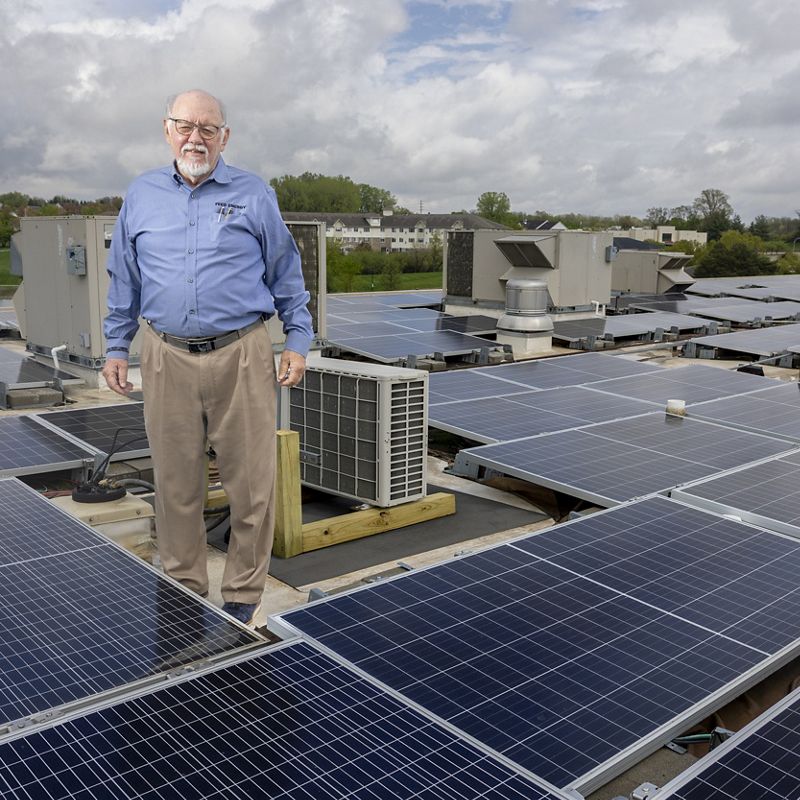
In Iowa, solar tax credits are spurring a wave of affordable clean energy
Residents and businesses see cost savings from federal tax incentives
Robert Riley is only half-joking when he says he’s in the thermonuclear energy business. As the CEO of a company that utilizes products from crops for animal feed and biofuel, Riley relies on the sun, the largest nuclear reactor in our solar system.
So it made perfect sense, Riley says, to take advantage of Iowa’s abundant sunlight for another purpose: generating electricity.
With the help of tax credits from the Inflation Reduction Act—the federal government’s biggest-ever investment in clean energy and climate action—Riley was able to install a solar array on his corporate headquarters in Pleasant Hill, Iowa. The panels, which cost $112,000, now save his business thousands of dollars on monthly electrical bills during sunny periods. “There are months that go by,” he says, “that we generate more electricity than we use.”
At a time when clean energy can be a source of political friction, Iowa is an outlier. Solar and wind in the Hawkeye State have a long history of bipartisan support. Yet, with federal support for renewable energy on shaky ground, the national tax credits that are helping Iowa go solar are in jeopardy.
Riley, a trustee of The Nature Conservancy, likens installing solar panels to the adage about planting trees. The best time to plant was 30 years ago. The second-best time is now. His advice to other businesses considering a change to solar? “Hurry.”
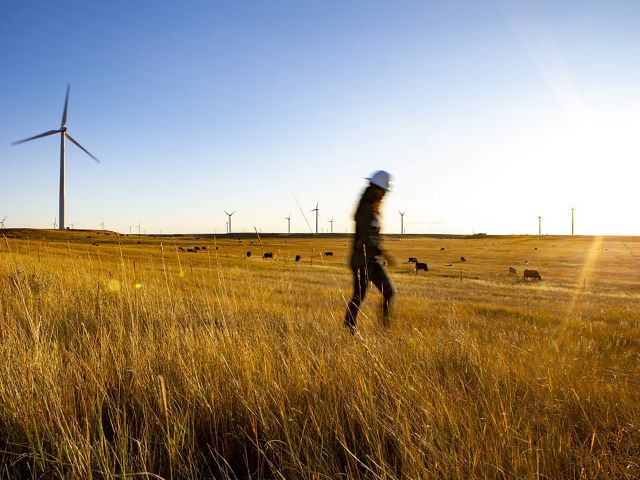
What is the Inflation Reduction Act?
The Inflation Reduction Act, signed into law in 2022, is the federal government’s biggest-ever investment in climate action. This law provides hundreds of billions of dollars for clean energy and conservation projects.
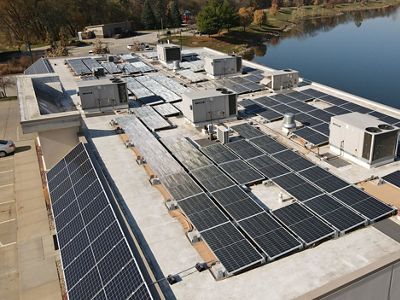
A bipartisan history of support for clean energy in Iowa
Iowa has long been a clean energy powerhouse. It generates roughly 60% of its electricity from wind—the largest share of any state. And while Iowa’s solar generation has a long way to go to catch up with wind, it’s been gaining ground in recent years, mostly due to sizeable increases in utility-scale solar. There remains plenty of room for expansion. With its sunny days and wide open spaces, Iowa ranks 16th in the nation for solar power potential.
The state has several forward-looking politicians to thank for its abundance of clean energy.
In 1983, Governor Terry Branstad signed the country’s first renewable portfolio standard, at a time when Iowa was still almost entirely dependent on coal. These standards, now found in many other states, require or encourage energy providers to offer a set minimum of electricity from renewable sources. A decade later, in 1993, Senator Chuck Grassley created the first-ever wind energy production tax credit.
“These were conservative Republican leaders that knew that diversifying our energy generation had economic benefit to Iowa,” says Jessica Maldonado, a public affairs consultant in Des Moines. “It's helped keep our rates below the national average.”
Quote: Jessica Maldonado
These were conservative Republican leaders that knew that diversifying our energy generation had economic benefit to Iowa.
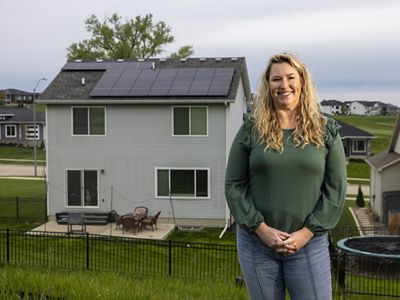
Solar tax credits benefit businesses and residents alike
Maldonado’s interest in residential solar solidified while doing education and outreach for The Nature Conservancy’s Grow Solar program. Grow Solar is a group purchasing program that lets residents and businesses pool their purchasing power to save on solar installations. Participants can save hundreds of dollars on installation costs.
In 2020, Maldonado took advantage of the program to put solar panels on her newly purchased home, leveraging state and federal tax credits that have received bipartisan support. The federal tax credits, which were set to expire in 2023, were extended to 2032 by the Inflation Reduction Act. IRA tax credits cover 30% of the costs of residential solar installation.
Maldonado has been pleased not just from the immediate cost savings she’s realized—she gets credit for energy sent back to the electrical grid during sunny periods to bank for cloudy days—but also from the panels’ ability to withstand powerful wind and hail. “I can tell you from my lived truth,” she says, “that these are very, very sturdy.”
Her experience has been so positive that she’s hoping to electrify her home’s heating and cooling systems as well.
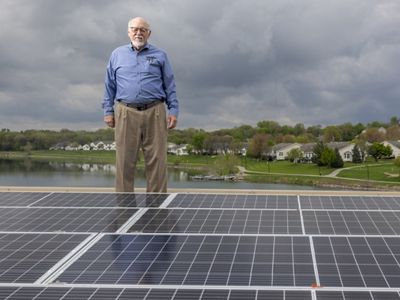
Reliable political support for solar tax credits is essential
Riley, too, is interested in expansion. He’s hoping to put solar arrays on a farm property and on four manufacturing facilities. His concern, however, is that the federal tax incentives he’s counting on might not exist by the time the panels are in place.
“I’m probably not going to do that cash outlay without those tax credits in there,” Riley says. Adding political uncertainty to the inherent risk of running an agricultural business, he adds, feels like rolling a few too many dice.
For now, at least, solar energy offers Riley, Maldonado and thousands of Iowans the peace of mind that comes with saving money and producing pollution-free electricity. Riley reports that his panels have just one drawback: “Occasionally, we have to wash them.”
Clean energy tax credits
Clean energy is critical to supporting American jobs, communities and nature. Congress needs to maintain the existing clean energy tax credits so they can continue to deliver for the American people and our environment.
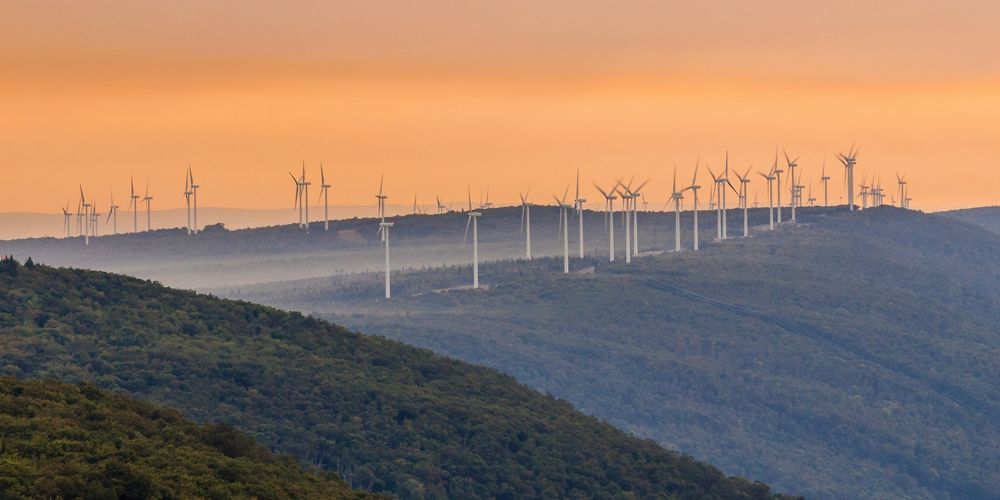
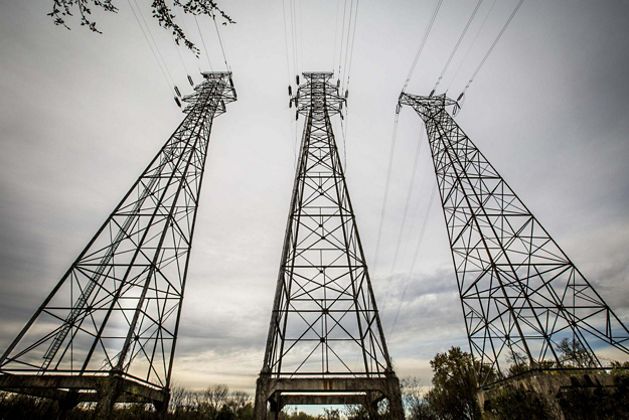
Stay connected
Get conservation stories, news and local opportunities from where you live.